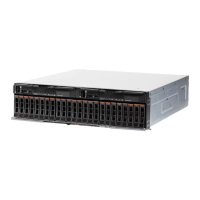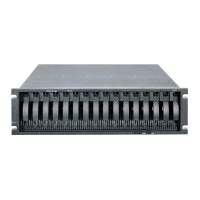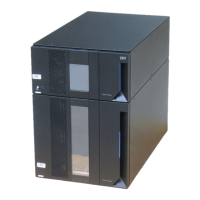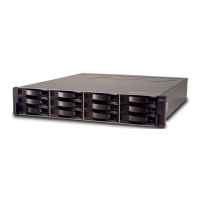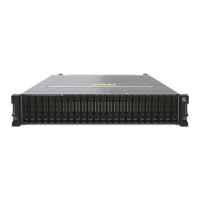512 IBM Midrange System Storage Hardware Guide
The performance of RAID 10 is approximately the same as RAID 0 for sequential I/Os.
RAID 10 provides an enhanced feature for disk mirroring that stripes data and copies the data
across all the drives of the array. The first stripe is the data stripe; the second stripe is the
mirror (copy) of the first data stripe, but it is shifted over one drive. Because the data is
mirrored, the capacity of the logical drive is 50% of the physical capacity of the hard disk
drives in the array.
The recommendations for using RAID 10 are as follows:
Use RAID 10 whenever the array experiences more than 10% writes. RAID 5 does not
perform as well as RAID 10 with a large number of writes.
Use RAID 10 when performance is critical. Use write caching on RAID 10. Because a
RAID 10 write will not be completed until both writes have been done, write performance
can be improved through the use of a write cache (be sure it is battery-backed up).
When comparing RAID 10 to RAID 5:
RAID 10 writes a single block through two writes. RAID 5 requires two reads (read original
data and parity) and two writes. Random writes are significantly faster on RAID 10.
RAID 10 rebuilds take less time than RAID 5 rebuilds. If a real disk fails, RAID 10 rebuilds
it by copying all the data on the mirrored disk to a spare. RAID 5 rebuilds a failed disk by
merging the contents of the surviving disks in an array and writing the result to a spare.
RAID 10 is the best fault-tolerant solution in terms of protection and performance, but it
comes at a cost. You must purchase twice the number of disks that are necessary with
RAID 0.
RAID summary
The following note and Table A-3 on page 513 summarize this information.
Summary: Based on the respective level, RAID offers the following performance results:
RAID 0 offers high performance, but does not provide any data redundancy.
RAID 1 offers high performance for write-intensive applications.
RAID 3 is good for large data transfers in applications, such as multimedia or medical
imaging, that write and read large sequential chunks of data.
RAID 5 is good for multi-user environments, such as database or file system storage,
where the typical I/O size is small, and there is a high proportion of read activity.
RAID 6 offers high availability with performance slightly lower than RAID 5.
RAID 10 offers higher performance than RAID 1 and more reliability than RAID 5.
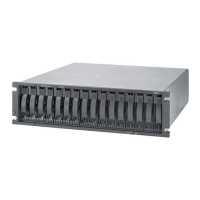
